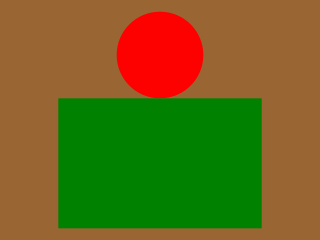
The 47th Battalion (British Columbia), CEF, was an infantry battalion of the Canadian Expeditionary Force during the Great War.

The 47th Battalion (British Columbia), CEF, was an infantry battalion of the Canadian Expeditionary Force during the Great War.
The 47th Battalion was authorized on 7 November 1914 and embarked for Britain on 13 November 1915. It disembarked in France on 11 August 1916, where it fought as part of the 10th Infantry Brigade, 4th Canadian Division in France and Flanders until the end of the war. By war's end the 47th had lost 899 men. One third of the fatalities, 271 men, were killed in the last 100 days of the war. [1] The battalion was disbanded on 30 August 1920. [2] The 47th Battalion recruited in New Westminster, Vancouver and Victoria, British Columbia and was mobilized at New Westminster. [3]
The 47th Battalion had four officers commanding:

One member of the 47th Battalion was awarded the Victoria Cross. Acting Corporal (later Sergeant) Filip Konowal was awarded the Victoria Cross for his actions during the period 22–24 August 1917, at the Battle of Hill 70 in Lens, France. [3]
Later in the war the 47th was designated the 47th Western Ontario Battalion because there were more men from that area in the unit than any other part of the country.
The 47th Battalion was awarded the following battle honours:
The 47th Battalion (British Columbia), CEF, is perpetuated by The Royal Westminster Regiment. [2]

The 58th Battalion, CEF was an infantry battalion of the Canadian Expeditionary Force during the First World War.

The 29th Battalion (Vancouver), CEF was an infantry battalion of the Canadian Expeditionary Force during the Great War.

The 22nd Battalion, CEF, was an infantry battalion of the Canadian Expeditionary Force in the Great War.

The 78th Battalion, CEF was an infantry battalion of the Canadian Expeditionary Force during World War I. The 78th Battalion was authorized on 10 July 1915 and embarked for Great Britain on 20 May 1916. It disembarked in France on 13 August 1916, where it fought as part of the 12th Brigade, 4th Canadian Division in France and Flanders until the armistice. The battalion was disbanded on 15 September 1920.

The 2nd Canadian Mounted Rifles Battalion, was authorized on 7 November 1914 as the 2nd Regiment, Canadian Mounted Rifles, CEF. The battalion recruited in Victoria and Vernon, British Columbia and was mobilized in Victoria. An earlier incarnation was raised for Boer War.

The 102nd Battalion, CEF, (initially the 102nd Battalion (Northern British Columbia), then after August, 1917, the 102nd Battalion (Central Ontario), CEF) was an infantry battalion of the Great War Canadian Expeditionary Force.
The 18th Battalion, CEF, was an infantry battalion of the Canadian Expeditionary Force in the Great War.

The 4th Battalion, Canadian Mounted Rifles was authorized on 7 November 1914 as the 4th Regiment, Canadian Mounted Rifles, CEF and embarked for Britain on 18 July 1915. It disembarked in France on 24 October 1915, where it fought as part of the 2nd Brigade Canadian Mounted Rifles until 31 December 1915, when it was converted to infantry and allocated to the 8th Canadian Infantry Brigade, 3rd Canadian Division. The regiment was redesignated the 4th Battalion, Canadian Mounted Rifles, CEF on 1 January 1916 and was disbanded on 6 November 1920.

The 21st Battalion, CEF was an infantry battalion of the Canadian Expeditionary Force in the Great War.

The 24th Battalion, CEF, was an infantry battalion of the Canadian Expeditionary Force during World War I.

The 8th Battalion, CEF, also known by the nickname of The Little Black Devils of Canada, was an infantry battalion of the Canadian Expeditionary Force during the Great War. The battalion was authorized on 10 August 1914 and embarked for Great Britain on 1 October 1914. It disembarked in France on 13 February 1915, where it fought as part of the 2nd Canadian Brigade, 1st Canadian Division in France and Flanders until the end of the war. The battalion was disbanded on 15 September 1920.

The 42nd Battalion, CEF, was an infantry battalion of the Canadian Expeditionary Force during the Great War.

The 44th Battalion (Manitoba), CEF, was an infantry battalion of the Canadian Expeditionary Force during World War I.

The 48th Battalion, CEF, was an infantry battalion of the Canadian Expeditionary Force during the Great War.

The 52nd Battalion, CEF, was an infantry battalion of the Canadian Expeditionary Force during the Great War.

The 54th Battalion (Kootenay), CEF, was an infantry battalion of the Canadian Expeditionary Force during the Great War.

The 60th Battalion, CEF was an infantry battalion of the Canadian Expeditionary Force during the Great War.
The 67th Battalion, CEF was an infantry battalion of the Canadian Expeditionary Force during the Great War which was converted to a pioneer battalion. The 67th Battalion was authorized on 20 April 1915 and embarked for Britain on 1 April 1916. It was converted to pioneer and redesignated the 67th Canadian (Pioneer) Battalion, CEF on 15 May 1916. It disembarked in France on 14 August 1916, where it served as part of the 4th Canadian Division in France and Flanders until 28 April 1917, when its personnel were absorbed by the Canadian Corps in the field. The battalion was disbanded on 30 August 1920.

The 72nd Battalion, CEF was an infantry battalion of the Canadian Expeditionary Force during World War I, and recruited throughout the province of British Columbia.
The 15th Battalion, CEF was an infantry battalion of the Canadian Expeditionary Force during World War I. The 15th Battalion was authorized on 1 September 1914, embarked for Britain on 26 September 1914, and arrived in France on 15 February 1915. The battalion fought as part of the 3rd Canadian Brigade, 1st Canadian Division in France and Flanders throughout the war. The battalion was disbanded on 30 August 1920.